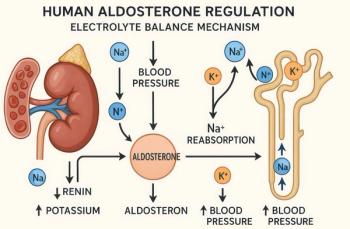
Women with Atrial Fibrillation at Higher Cardiovascular Risk vs Men
The risk includes a 1.99X higher risk for stroke and 1.93X higher risk of CV mortality, according to new research.
[[{"type":"media","view_mode":"media_crop","fid":"45730","attributes":{"alt":"","class":"media-image media-image-right","id":"media_crop_5738340948811","media_crop_h":"0","media_crop_image_style":"-1","media_crop_instance":"5257","media_crop_rotate":"0","media_crop_scale_h":"0","media_crop_scale_w":"0","media_crop_w":"0","media_crop_x":"0","media_crop_y":"0","style":"height: 348px; width: 265px; float: right;","title":"©Sebastian Kaulitzki/Shutterstock.com ","typeof":"foaf:Image"}}]]Atrial fibrillation (AF), a growing epidemic worldwide, has been associated with increased risk for many adverse cardiovascular events. In recent years, an expanding body of literature has emerged suggesting that there may be gender differences in cardiovascular outcomes for men compared with women, given the same set of risk factors. Yet, the risk of AF based on gender and resultant outcomes has not been well studied and remained an outstanding question until now.
A meta-analysis of 30 studies with >4 million participants over nearly 50 years (1966-2015) sheds some light on this issue. Only studies that had at least 50 participants in each arm and reported on sex-specific associations and cardiovascular events were included. Recently published in the
The authors offered several hypotheses for these observed differences, including possible undertreatment of women and physiologic or psychosocial differences between women and men. However, the true mechanism of these findings remains uncertain and warrants additional research and it is not clear whether this relationship is associative or causative.
Because this meta-analysis is comprised of observational studies, its conclusions cannot be considered definitive. However, as a hypothesis-generating study, these findings are relevant to the clinician insofar as women with newly diagnosed AF may represent a particularly high-risk population in need of more aggressive care of comorbidities.
Source
Emdin CA, Wong CX, Hsiao AJ et al.
Newsletter
Enhance your clinical practice with the Patient Care newsletter, offering the latest evidence-based guidelines, diagnostic insights, and treatment strategies for primary care physicians.
















































































































































































































































































